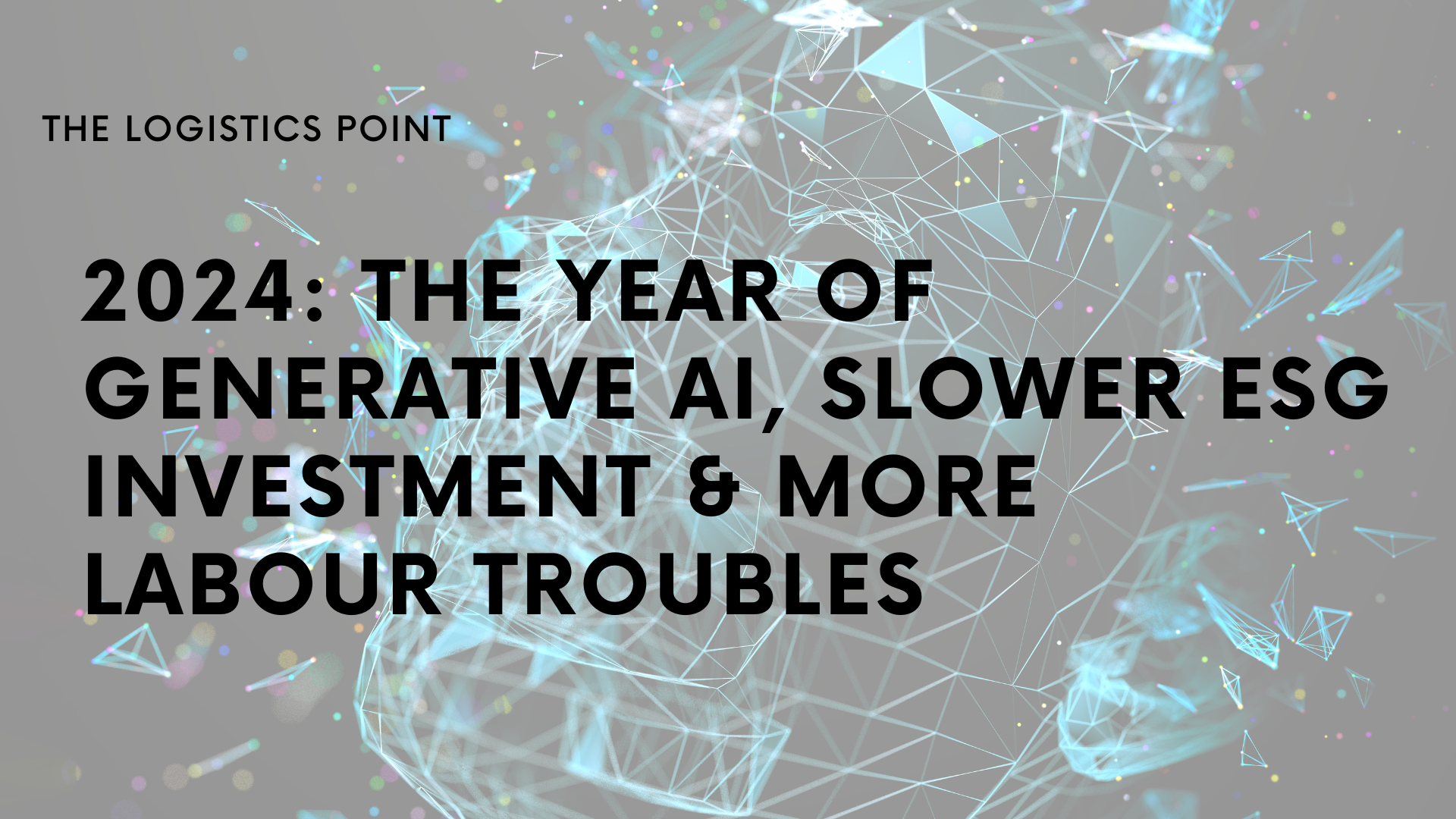Exiting the pandemic, 2023 ushered in a transformative period for retailers and their supply chain operations. In 2024, amidst slow economic growth and rising operational costs, retailers are navigating a landscape where customer influence is more pronounced, demanding both enhanced productivity and innovative transport operations. Here’s a glimpse into the trends shaping retailers’ logistics and transportation success in 2024.

In H1 of 2024, global growth will continue to be sluggish, with signs of recovery in H2. However, this doesn’t mean the logistics transportation industry should expect ‘more of the same’. Societal and geopolitical upheavals – not to mention new technologies like generative AI – mean the sector is in constant flux,’ states Nikolay Pargov, Chief Revenue Officer at Transporeon.
Collaboration is the answer
Supply chain collaboration emerges as a pivotal focus for 2024, aiming to improve communication and foster partnerships between suppliers and distributors across the UK and Europe.
Lucie Hyde, Managing Director at LNH Transport says that this collaboration will help fulfil customer needs which is a vital part of logistics, as there continues to be an increased demand in services like last-mile delivery and dedicated services.
Generative AI
Generative AI emerges as a key highlight for the year, with companies translating AI excitement into actionable strategies. Initial AI use cases will likely involve automating internal processes and/or using past data to make future predictions. Autonomous procurement tools – which use AI, ML and applied behavioural science to drive efficiency, develop shipper and carrier profiles, calculate price predictions and make offers – are just one example.
‘The transformative potential of IoT (Internet of Things) track and trace devices in the logistics sector over the coming five years is both exhilarating and promising. The evolution of IoT technology, especially in terms of its flexibility, weight, and longevity, is set to redefine how we manage, monitor, and optimise supply chains, tells us Sam Colley, CEO of Pod Group.
In the coming year, brace for remarkable growth in the adoption of Generative AI and, notably, Conversational AI solutions within the supply chain sector. The capability to engage in a dialogue with a connected ‘business network,’ linking all your systems and external trading partners, will deliver immense value to companies across the board.
This evolution promises to expedite supplier onboarding, streamline logistics flows, enhance inventory management, and quicken payments between parties. Get ready for a transformation in user interaction with business networks thanks to Conversational AI.
Sustainability & ESG
The industry is gearing up to adapt to new ESG mandates, leveraging business networks to exchange ESG and SCOPE 3 information and comply with evolving regulations.
In the upcoming year, there could be a shift away from costly ‘sustainable hardware’ ventures, such as electric trucks, towards a more cost-effective ‘software-centric’ strategy. This approach aims to minimize carbon emissions by boosting efficiency.
Through smart software applications, companies can trim unnecessary wait times, decrease empty mileage, devise more streamlined routes, and coach drivers in adopting sustainable driving methods. It’s a move towards eco-friendliness through smarter, software-driven solutions.
With the introduction of new ESG mandates worldwide, companies are being forced to make significant changes to their supply chain operations. Business networks allow companies to not only exchange information digitally, but they can also derive powerful insights to help optimize up and downstream processes and comply with regional compliance mandates.
From adhering to the Dodd Frank Conflict Minerals law in the US to ensuring that all companies in Germany embrace the ‘Act on Due Diligence in Supply Chains’, ethical and sustainable sourcing will become a required business practice moving forwards.
‘Business networks will become central to the exchange of ESG and SCOPE 3 information, and we will likely see new EDI transactions emerge or existing transactions updated to include information about ESG and SCOPE 3 reporting,’ says Mark Morley, Senior Director, Product Marketing at OpenText.
Stormy seas for maritime
In 2024, geopolitics and natural disasters will also shape the fate of ocean. The Panama Canal drought and missile strikes by Houthi rebels in the Suez Canal – which are forcing vessels to reroute via Cape Horn – are just two examples of disruption lengthening transit times.
‘From a regulatory perspective, the European Commission’s decision not to extend the legal framework exempting liner shipping consortia from antitrust rules will intensify upheaval as carriers adapt to a new environment,’ outlines Nikolay Pargov at Transporeon.
Lastly, the EU’s Emission Trading Scheme will take effect in January 2024, affecting all inbound, outbound, and transshipment vessel movements. Among other measures, it will tax inbound and outbound transshipments at 100% if the ports are within 300 miles of their origin or destination. This will encourage shipping carriers to choose transshipment ports outside the 300-mile zone.
New approach
In the fast-evolving landscape of retail, the traditional approaches influencing logistics and transportation costs are facing a shake-up. With profit margins in the spotlight, logistics leaders must innovate in 2024. Strategic modelling tools will play a key role in identifying tweaks within the supply chain network, sourcing strategies, transport modes, and service policies that promise substantial cost savings.
To navigate the pressure of cost reduction and heightened customer expectations, retailers are eyeing fresh logistics-driven business models and digital customer engagement. For instance, distribution sectors are transitioning from rigid delivery cycles for different customer segments to hybrid routes.
These new approaches combine fixed deliveries for priority customers with more adaptable routes for other segments, ensuring a balance between efficiency and customer service. Adaptability is key in the pursuit of both cost-efficiency and customer satisfaction.
‘The result is much more cost-efficient delivery operations and more agile and responsive service for customers – a model that could readily be replicated across retail,’ says Chris Jones from Descartes.
Geopolitics
‘I do think there’s something to be said about national security playing a role in supply chains in 2024. Similar to how some government bodies have banned TikTok from employee’s devices—for fear of the Chinese government being able to exert pressure on the app’s owner to gain access to sensitive data of Americans—certain items manufactured in China are coming into question,’ says Jag Lamba, CEO and founder of Certa.
In India and other countries, we’ve seen Chinese manufactured goods banned from being used in telecom infrastructure due to the breadth and sophistication of espionage activity there.
It’s not unreasonable to think there might be similar restrictions on what we’re able to use within the supply chain technology stack as well as the items we can bring to America.
Comment by Chris Jones, EVP, Descartes Systems Group. More on page 14
Labour Shortages
Finding labour and the quality of the candidates will remain a challenge for retailers in 2024. There is a general lack of people available across all industries and workers will continue to move across industries to find the highest pay or most favourable working conditions. These factors continue to restrain logistics and transport managers from readily filling existing resource gaps or building the operation for growth. ‘Retail logistics and transport operations will therefore need to prioritise retention strategies and leverage automation to ensure sustained efficiency.


